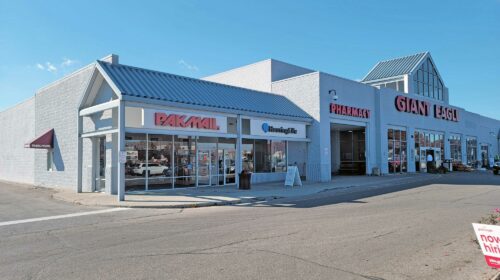Thinking About Investing in Multifamily? Start Here.
Overall, 2021 was a strong year for NAI Ohio Equities. December closings included several land deals and office leases. One of our largest transactions for the month was the sale of Huntwork Gardens, a multifamily portfolio located in Pickerington, Ohio, consisting of 24 units.
Huntwork Gardens presented investors with a well-maintained asset that offered both short and long-term paths for return on investment. The 100% occupied property had current rents well below the submarket average which created an opportunity for investors to capitalize on the rent delta. The condition and location of the property not only attracted tenants but also offered the opportunity for long-term gains as the asset’s value grows.
Multifamily properties in the Columbus MSA have been one of the most sought-after asset classes this past year, due to record-level demand for housing. Strong economic and demographic trends are supporting these figures. Columbus is at the top of the list for Midwest Metropolitan Areas and one of the fastest-growing cities in the nation with its population increasing 15% since 2010, explained Carter Stephens who represented the seller and specializes in investment properties at NAI Ohio Equities.
“It’s an asset class that people tend to be familiar with. Most people have rented an apartment at some point in their life. When it comes to investments, people tend to gravitate towards what they are comfortable with,” said Stephens, which also makes it attractive for first-time investors.
For those who are considering embarking on purchasing their first multifamily property, Stephens has some advice regarding how to get started.
To begin, evaluate what your goals are for the investment. For example, some investors are looking to generate income while others are looking for capital appreciation on the asset itself and others want both. Defining your goals allows your broker to help you develop a strategy to achieve those goals, he explained.
In addition, consider how you will purchase the asset and how the capital stack will be composed. Who is contributing the equity and is debt needed? If debt is needed, there are a number of ways to access it for investment properties, however, the threshold to qualify can be high depending on the type of debt. For Huntwork Gardens, one loan program mandated that qualified applicants must have a net worth equal to the loan amount, have nine months of debt service payments liquid, and demonstrate that they have owned and managed properties in the submarket of the desired property. This can cause issues for newer investors who might have the capital required, but not experience, said Stephens.
Once you have determined the what and the how it’s time to start your search. As you begin to look at properties, your broker will conduct what is known as a Broker Opinion of Value. Additionally, there are some key metrics that will help you evaluate the financial viability of your potential investment.
To begin, investors should underwrite the property to get an understanding of the in-place net operating income (NOI). From there, an investor can begin to analyze the current operational efficiency and where the upside on the investment lies, if any. They will then want to look at capital expenditures, specifically major capital expenditures, and determine what has been done and what will need to be done. Unexpected capital expenditures can have a significant impact on future cash flow and overall return metrics during the life cycle of your hold period.
Occupancy is another indicator of a property’s investment viability. Not only is occupancy important in terms of repayment of the debt and how lenders evaluate their risk, but it also is an indicator of how well the property is maintained. A stable investment will have +-95% occupancy, said Stephens.
Whether or not there is an opportunity to bring “in-place rents” to “market rents”, also known as the rent delta, is another metric that may come into play, depending on your investment goals. Investors that are looking to maximize the monthly return will want to examine this metric closely and do a deep dive into the monthly rents their competitors are charging in the submarket. “Bringing rents in line with the market is a balancing act that should be performed with caution so that you maximize your rental rates while maintaining low vacancy,” he explained.
Finally, in terms of financial analysis, Stephens says there are three key metrics sophisticated investors will examine. The capitalization rate, also known as cap rate, provides a snapshot comparison of a commercial real estate asset’s return by taking the property’s NOI and dividing it by the current market value or sales price. “A cap rate is a good indicator of the yield an investment will provide. This allows investors to quickly compare Property A against Property B. However, this metric does not take into account debt service so it certainly has its shortcomings if an investor plans to assume debt on the capital stack,” said Stephens.
Cash-on-cash return is used to measure the amount of pretax cash flow an investor will receive relative to the amount of cash they invested in the property. This return metric includes debt service and provides an investor a better understanding of the yield they will receive on the money they actually put into a real estate deal, said Stephens.
The internal rate of return (IRR) takes into account all future cash flows associated with the investment and discounts that to a present value, which helps derive the profitability of a potential investment.
“This calculation is valuable if an investor is trying to compare asset classes. It is the standard to evaluate investments on an apples-to-apples comparison. By calculating future cash flows and discounting them, investors can view the property in today’s dollars,” he added.
For a complete list of all of December’s sold or leased properties, please download our monthly transaction sheet.




